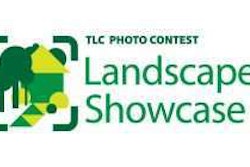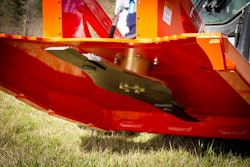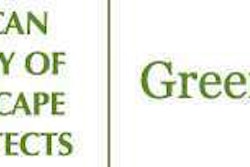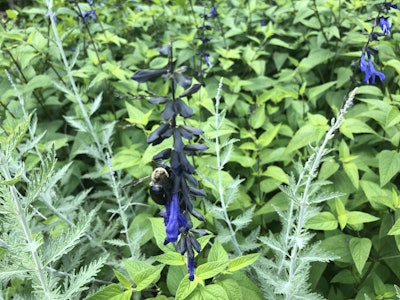 Photo: Jill Odom/Total Landscape Care
Photo: Jill Odom/Total Landscape CareThe health of North America’s pollinators, especially bees, remains an important economic issue. After all, bee pollination is responsible for more than $15 billion in increased crop production value each year.
Although many challenges to pollinator health play out in agricultural and other rural settings, scientists at the Michigan State University Extension, along with partners elsewhere, stress that the management of ornamental landscapes in urban and suburban areas has a substantive impact as well.
That’s especially true on two fronts: habitat quality and pesticide exposure.
 Dr. David Smitley
Dr. David SmitleyThat’s why the MSU Extension published a free guide for landscapers and growers titled “Protecting and enhancing pollinators in urban landscapes for the U.S. North Central Region.” Entomology colleagues elsewhere in the country are already at work on similar guides for those regions, but the lead researcher on the MSU study, Dr. David Smitley, says the published bulletin can be used by readers elsewhere – especially in the Southeast – because much of the plant material is similar.
Besides, Smitley says, landscapers in other regions of the country can take the researchers’ advice on numerous practical issues covered in the bulletin “and just switch out the plants” to comparable varieties appropriate for their areas.
Smitley says landscape contractors who study the 30-page report will learn “answers to every possible question” they may have when it comes to flowers, trees, shrubs and groundcovers, along with pesticide practices, that will improve both the population and health of pollinators.
They can put that expertise into practice by showing their clients how a landscape can be enhanced to aid pollinators.
“We even specify what kind of trees, shrubs and perennials to plant,” he says.
What’s more, those convenient lists of pollinator-friendly trees, shrubs, flowers and grasses are supplemented by comprehensive tables devoted to plants that are likely to need pesticide treatment in order to remain healthy in the landscape.
The bulletin notes that “a combination of factors is causing declines in bee and pollinator populations, including parasites, pathogens, loss of habitat or flowers that provide pollen and nectar, and pesticide exposure.”
As an entomologist, Smitley is well aware of the controversy surrounding the use of the neonicotinoid class of pesticides – often called “neonics.” Landscape contractors are likely to appreciate the balanced treatment of the controversy in the MSU Extension bulletin.
“The public tends to be wary of pesticides …, but what we’re doing in the landscape isn’t going to affect the commercial beekeepers,” Smitley says. “However, it will have an impact on home flower growers.”
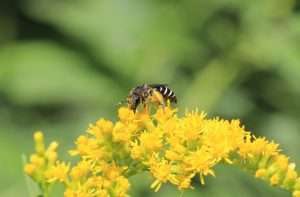 Like the domesticated honey bee, native bees are important pollinators.
Like the domesticated honey bee, native bees are important pollinators.Photo: Jason Gibbs, MSU
He noted that landscapers have been moving for years toward greater use of integrated pest management, or IPM, in which harmful pests are controlled by natural means. An important element of those natural controls is the protection, if not the introduction, of relatively benign insects in the landscape that prey on harmful pests.
“In the landscape, it’s not really a matter of introducing them; they’re already there,” Smitley says. “But pesticides are killing them.”
For example, in the East Lansing area around MSU, spider mites were a huge problem for plants for years until another mite – a predator – took hold in the area. The predator is a much less serious problem than the spider mites.
“Today, if I were to go out in my backyard and use a pesticide spray, the spider mites would be back eventually,” Smitley says, because the pesticide would kill off the predator mites.
Still, he believes pesticides have their place. “I think it would be extreme to ban neonics,” Smitley says.
In the MSU publication, the authors show how to practice IPM techniques while reserving pesticides for only those situations in which there is no practical alternative.
Landscape professionals will find detailed recommendations in the report on the types of plants, shrubs and trees that improve pollinator habitat. There’s also advice on selecting plants that will ensure your clients’ landscapes create blossoms for pollinators throughout the season.
The bulletin identifies problem-prone plants as well.
In addition to Smitley, the report’s authors include Diane Brown and Erwin Elsner, who are also with the Michigan State University Extension; Joy N. Landis, Michigan State University IPM; Paula M. Shrewsbury, University of Maryland Department of Entomology; and Daniel A. Herms, Ohio State University Department of Entomology.
